Abstract
The Canadian Cooperative Wildlife Health Centre (CCWHC) was established in 1992 as an organization among Canada's 4 veterinary colleges, with a mandate to apply veterinary medicine to wildlife management and conservation in Canada. A major function of the CCWHC is nation-wide surveillance of wild animal diseases. Disease surveillance is conceived as consisting of 4 different activities: detection, diagnosis, information management, and use of information. In the CCWHC surveillance program, detection of disease is carried out by a wide range of professional and avocational field personnel, and much effort is expended to stimulate and support this activity. Diagnosis is done by personnel of provincial and federal veterinary laboratories and the CCWHC. Information management is achieved through a national database of wildlife disease incidents developed and maintained by the CCWHC. Use of information is enabled through established channels for distribution of information derived from the surveillance program to persons responsible for wildlife programs and policies, and to the public. There has been a high demand for the services of the CCWHC since its establishment. The CCWHC responds to approximately 2000 requests for information annually, distributes its newsletter to over 1700 recipients, examines approximately 1200 wild animal submissions each year, and has accumulated records of over 5000 disease incidents in its database. Technical information from the CCWHC has benefited federal, provincial/territorial, and nongovernment wildlife agencies; endangered species recovery programs; federal and provincial veterinary services; and federal and provincial public health programs.
Full text
PDF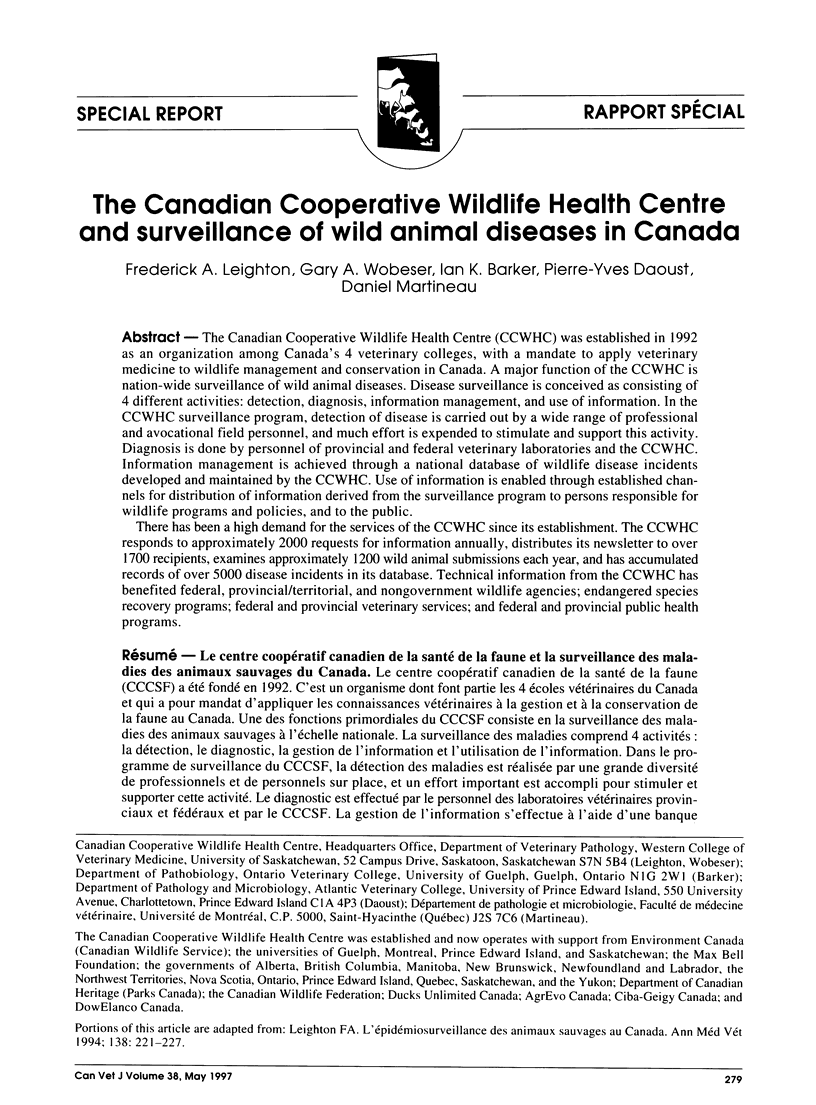
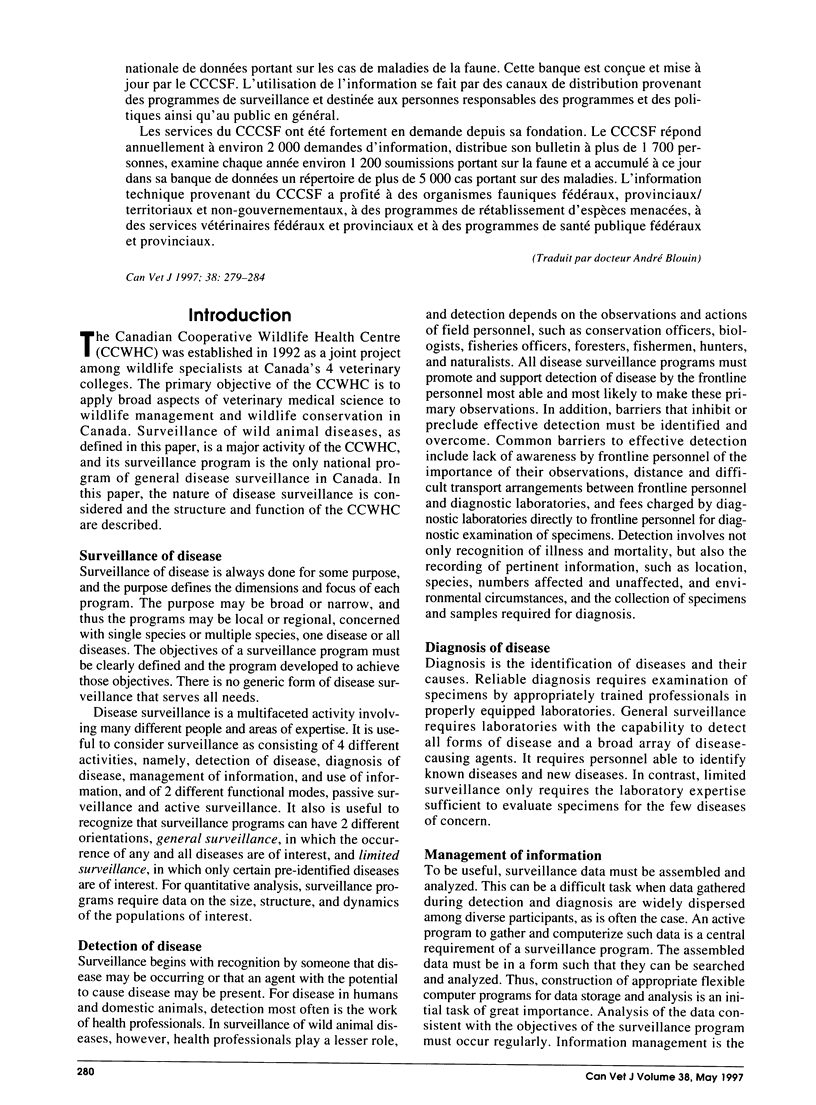
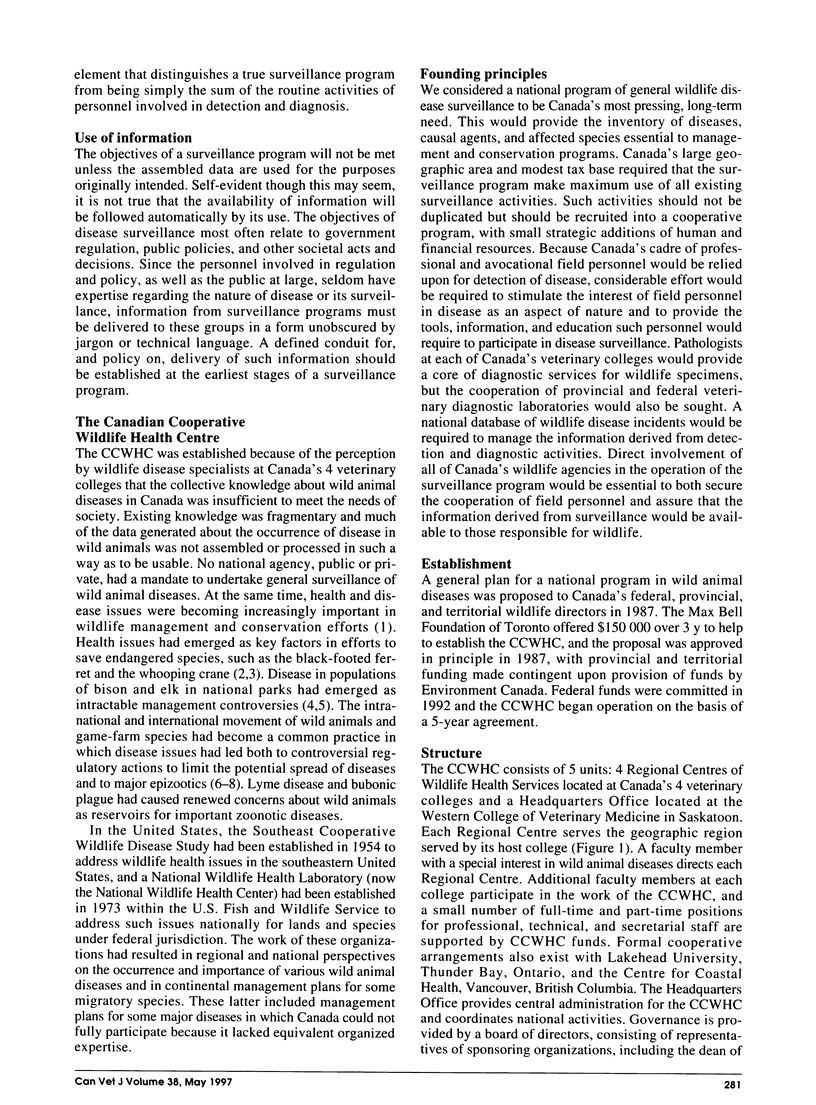
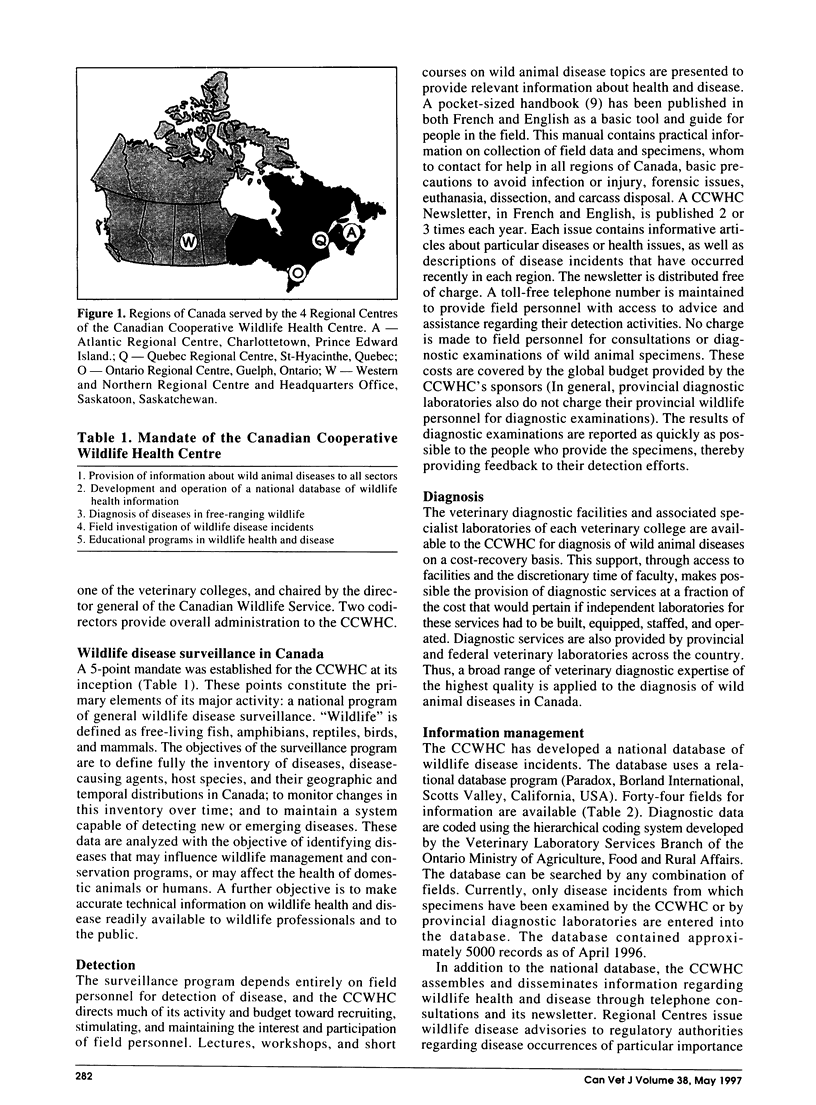
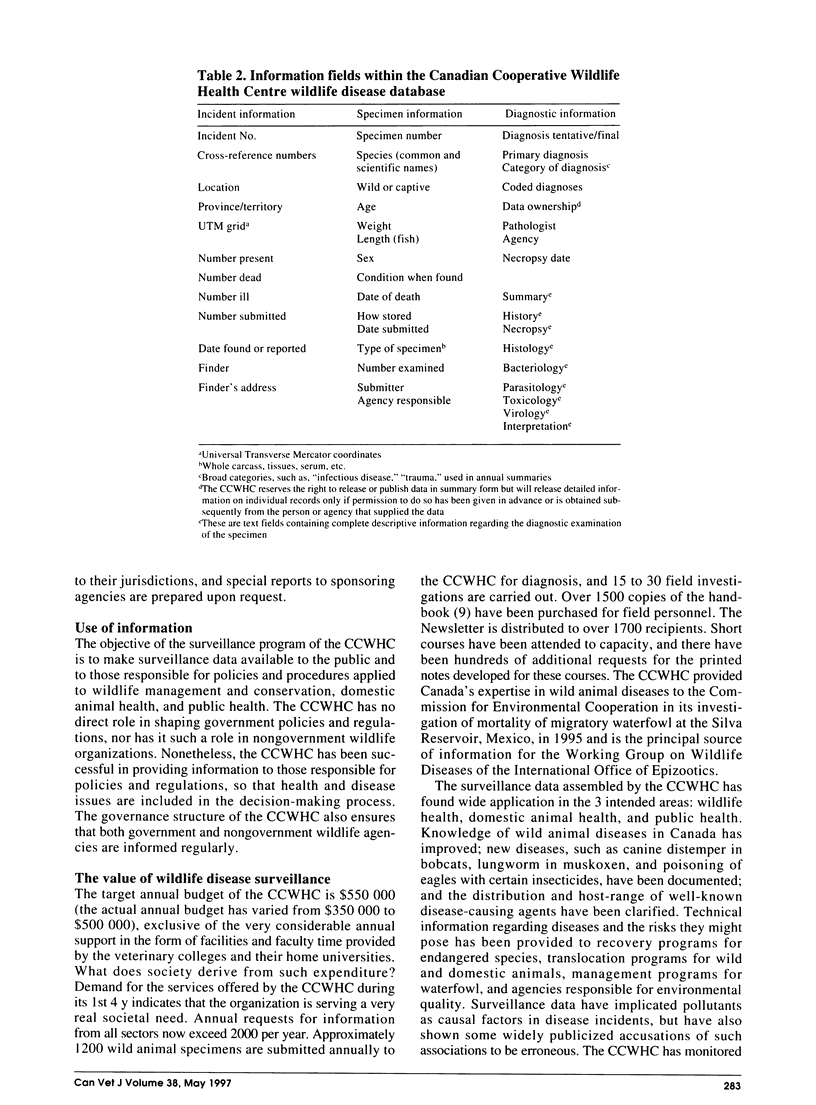
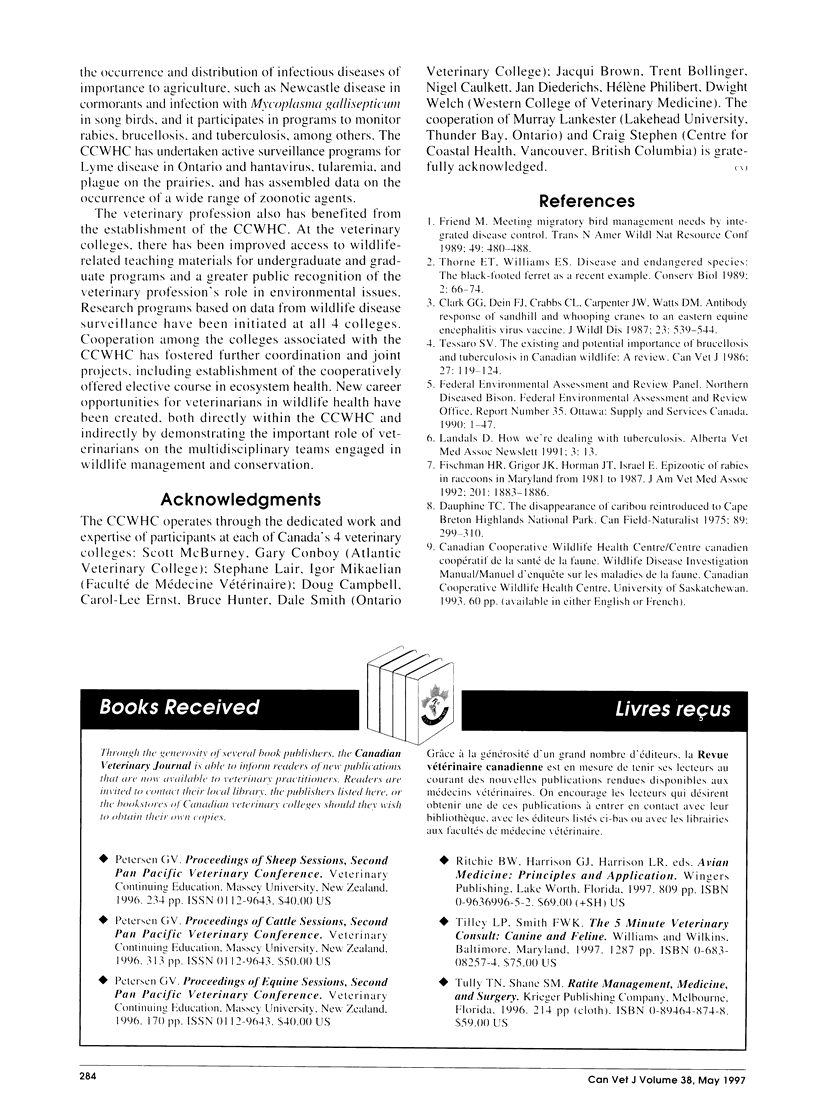
Images in this article
Selected References
These references are in PubMed. This may not be the complete list of references from this article.
- Clark G. G., Dein F. J., Crabbs C. L., Carpenter J. W., Watts D. M. Antibody response of sandhill and whooping cranes to an eastern equine encephalitis virus vaccine. J Wildl Dis. 1987 Oct;23(4):539–544. doi: 10.7589/0090-3558-23.4.539. [DOI] [PubMed] [Google Scholar]
- Fischman H. R., Grigor J. K., Horman J. T., Israel E. Epizootic of rabies in raccoons in Maryland from 1981 to 1987. J Am Vet Med Assoc. 1992 Dec 15;201(12):1883–1886. [PubMed] [Google Scholar]
- Tessaro S. V. The existing and potential importance of brucellosis and tuberculosis in canadian wildlife: a review. Can Vet J. 1986 Mar;27(3):119–124. [PMC free article] [PubMed] [Google Scholar]



